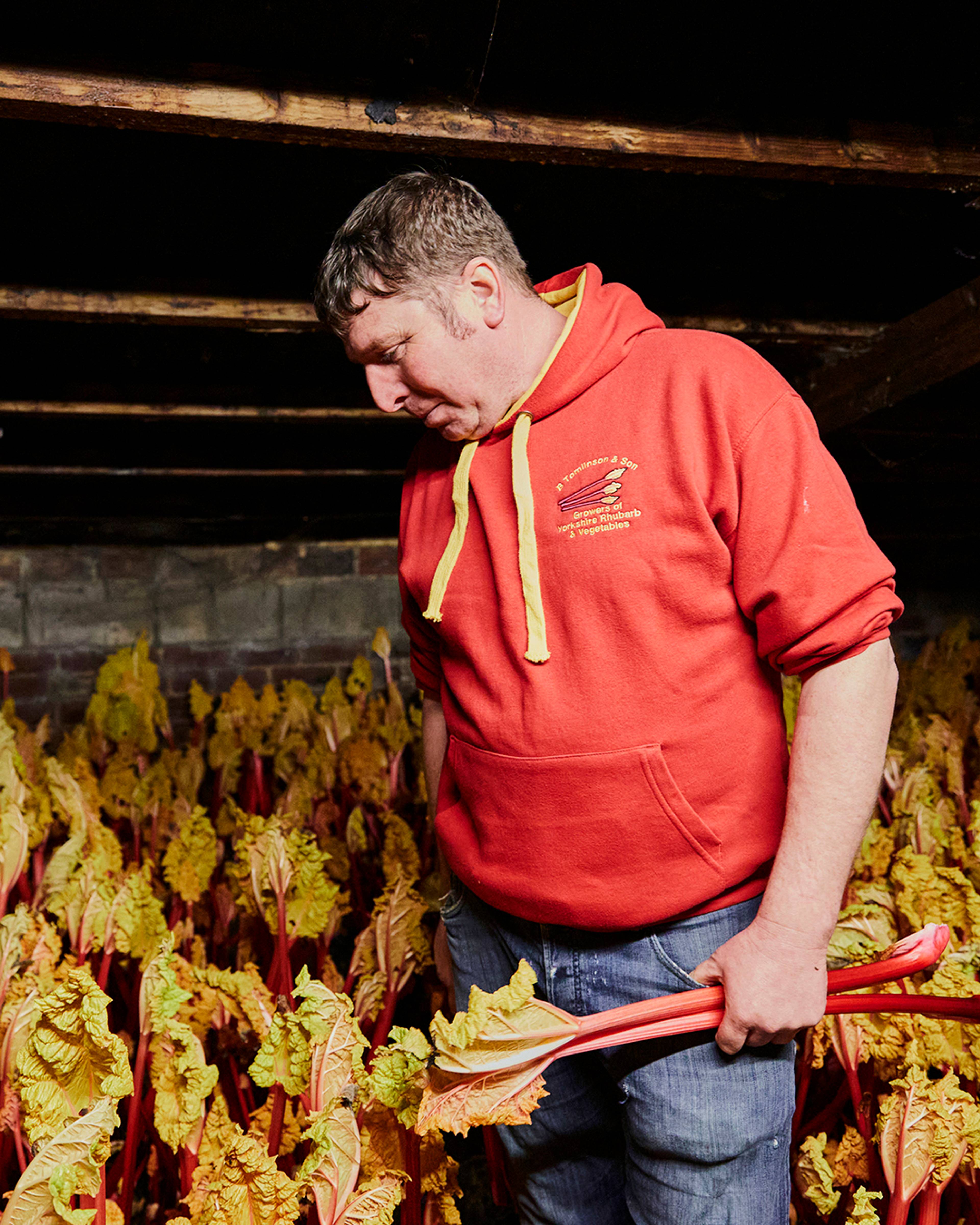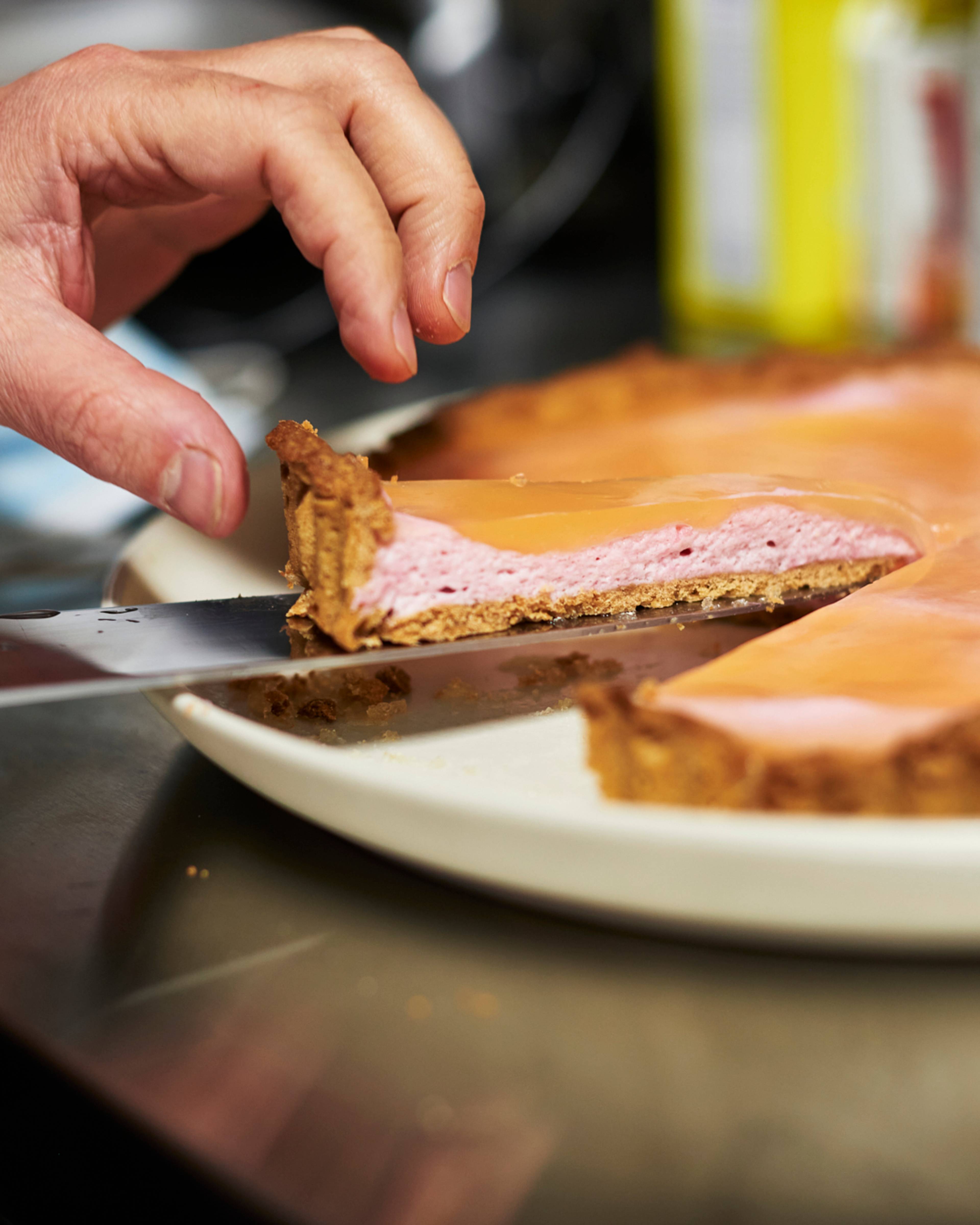Born In The Dark — the Forced Rhubarb origin story
History has it that the first Forced Rhubarb grew by accident. Unwittingly covered over winter in London’s Chelsea Physic Garden, the gardeners noted that the stalks had shot up months earlier than a normal outdoor crop, and with a vibrant colour.
From West London, to West Yorkshire: by the late 1870’s, growers in what would become known as ‘The Rhubarb Triangle’ had constructed specialised forcing sheds to bring Forced Rhubarb to market at a time when very little else grew in the UK and storage fruits — apples and pears — were running low.
From December, rhubarb crowns were taken from the field into darkened, heated sheds for a new phase of forced growth. The warmth reawakens the plant and triggers them to shoot up while a total absence of light prevents photosynthesis, preserving their vibrant colour, natural sweetness and tender character.


Rhubarb is a native Siberian plant and found an ideal climate in this cold pocket of Yorkshire. Add in highly mineral soils, enriched by shoddy from the local wool mills, plus an abundance of cheap coal to heat the sheds and a new industry boomed. 100 years later however, when it became the norm to see imported tropical fruits on supermarket shelves all year round, this seasonal, locally grown food fell out of favour. From over 200 growers, the number dwindled to around a dozen.
Today, Forced Rhubarb is decidedly back in fashion and, for the first time in decades, the number of traditional growers in Yorkshire is on the rise. These growers go to extraordinary lengths for exceptional Forced Rhubarb and keep a local growing artistry alive.
SAVED CROWNS
Traditional growers split their own crowns, regrowing from the same plants year on year. This allows them varietal control over the crop and draws on their ability to recognise — and eliminate — deviations and disease while nurturing the characteristics they value most. The result: deeply pigmented rhubarb with thick, tender stems every year.
COLD UNITS
A harvest comes at the end of two years of field growth. During this time, our growers hope for hot summers to help the plants store energy and cold winters to send the crowns into dormancy before forcing can begin.
Rhubarb must accumulate a minimum number of cold units in the field to trigger re-growth once it reaches the forcing sheds. Because of this, few of the growers in the Yorkshire Triangle cultivate Stockbridge Arrow which requires 270 cold units – more than double that of Harbinger. With soil temperatures rising, it's a variety that will become increasingly difficult to grow.
CANDLELIT HARVEST
With so much riding on this final stage, growers won’t risk any damage to their plants as they pick. They crouch in low ceilinged sheds, quickly but gently snapping the rhubarb from the crown, taking care not to break the stalks. This is all done by the low glimmer of candles as exposure to intense light would dull the vibrant pink pigmentation and minimise the sweetness and tenderness that Forced Rhubarb is known for.
Today, this local tradition has met a global audience: you’ll find Yorkshire Forced Rhubarb on the menus of seasonally-led restaurants from London and Paris to Copenhagen and NYC. Robert, Jonathan and Jason’s work, combined with our sourcing efforts is helping to preserve growing artistry and bring unique flavours back from the brink of extinction.
Stories
See allWe exist to fix the food system.
People are more cut off from the origins of their food than ever. This makes flavour, nutrition and farming practices that protect the planet, almost impossible to find.
By working directly with growers, we create a more sustainable way forward for farming. By giving everyone the tools to understand the power of our food choices, we empower everybody to become drivers of change.
Now is the time for action. Join the food system revolution.

Go beyond four seasons
Each fruit and vegetable has its own season, with subtle shifts which happen every day. Follow their microseasons to unlock flavour at every stage.
WHAT’S IN SEASON?

Know where your food comes from
We know the name of the people behind everything we source. Recognise their growing artistry to find out exactly where your food comes from (and why that matters).
MEET THE GROWERS

Make your diet diverse
Our growers work with varieties chosen for quality and nutrition, not yield. By selecting their crops you keep heritage seeds in play, add to ecosystem biodiversity and preserve unique flavours.
PEAK SEASON BOX
United Kingdom
© 2026 Natoora Ltd.




